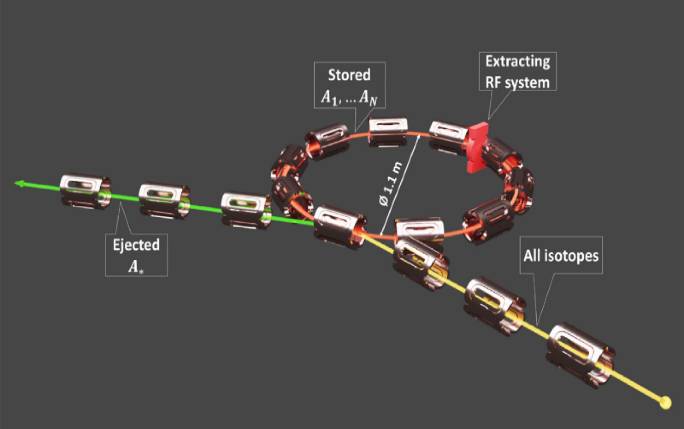Superconducting recoil separator for radioactive isotopes

In a paper just published in Nuclear Instruments and Methods, members of the Quasar Group Cristian Bontoiu, Javier Resta Lopez, Volodymyr Rodin, and Carsten Welsch, together with Ismael Martel from the University of Huelva who spent one year in our Department as visiting Professor, have presented a new concept of a compact ring spectrometer that can provide superior resolution.
The recent development of radioactive beam facilities, such as the HIE-ISOLDE facility at CERN, has significantly expanded the capabilities for investigating the structure of the atomic nucleus and the nuclear interaction. However, the unambiguous identification of medium and large mass reaction fragments becomes particularly challenging and require an efficient and high-resolution recoil separator.
The team based at the Cockcroft Institute has designed a versatile recoil separator for radioisotopes that can meet those demanding requirements. The spectrometer is based on a compact superconducting (SC) Fixed-Field Alternating-gradient (FFA) ring mini-ring of approximately 1 m diameter.
This machine would be able to store a number of light/heavy radioisotopes simultaneously and separate them from the main beam by radiofrequency gymnastics. It also presents the advantage of significantly reducing the size with respect to standard non-SC recoil separator configurations.
Although this concept has mainly been designed to address the challenges in the context of HIE-ISOLDE, it can easily be updated and applied to other radioactive beam facilities, such as SPIRAL2 at GANIL (Caen, France), FRIB at MSU (East Lansing, USA) and SPES at INFN-LNL (Legnaro, Italy).
The full article can be found here: https://doi.org/10.1016/j.nima.2020.164048